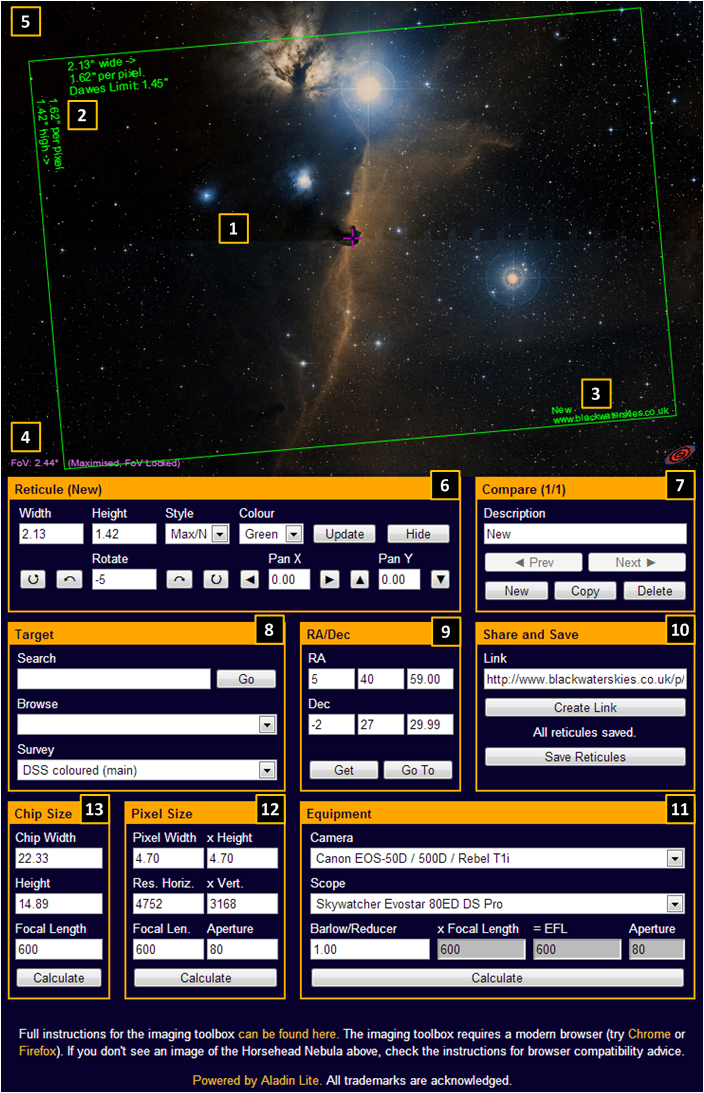The imaging toolbox contains many features of use to the astro-imager, whether using your own equipment or a remote observatory, including:

- View a selection of all-sky image surveys directly from your web browser with no need to install extra software.
- Explore the sky interactively by panning, zooming and dynamically switching between surveys.
- Find almost any deep-sky target by common name or catalogue number (Messier, NGC, ICC, etc.), or choose from a list of popular imaging targets.
- Go to any location using Right Ascension and Declination coordinates.
- Overlay the sky with a reticule which reproduces the field of view of your camera and telescope / lens.
- Display multiple reticules at once to compare the fields of view of different camera and telescope / lens combinations. Great for evaluating prospective investments in new equipment!
- Reposition the target and rotate the reticule to work out the best way to frame your image, as well as changing the reticule colour to suit different sky backgrounds.
- Arrange multiple reticules on a single target to plan a mosaic.
- Annotate the reticule with the field of view dimensions, pixel scale and the resolving power of your scope/lens.
- Set the reticule size by directly entering the dimensions of your field of view if you already know them, or calculate them if you don't.
- Calculate field of view dimensions using camera chip or pixel dimensions, resolution and the focal length of your scope or lens.
- Or choose from a database of hundreds of popular telescopes, astronomical CCD and DSLR cameras.
- Determine the effect of adding a Barlow lens or focal reducer/field flattener on your set-up.
Read on for full instructions.


 I am in the early stages of planning to build a pico-observatory for my imaging gear. My aim is to make it as small as possible in order to save cost and also to make it easy to build and maintain. There are a number of rough guides to building micro-observatories and pico-observatories on the web, but one key consideration seems to be glossed over in all of them. That is how to determine the space needed for the scope and German Equatorial Mount (GEM) to operate without colliding with the floor, walls or roof of the observatory.
I am in the early stages of planning to build a pico-observatory for my imaging gear. My aim is to make it as small as possible in order to save cost and also to make it easy to build and maintain. There are a number of rough guides to building micro-observatories and pico-observatories on the web, but one key consideration seems to be glossed over in all of them. That is how to determine the space needed for the scope and German Equatorial Mount (GEM) to operate without colliding with the floor, walls or roof of the observatory.



